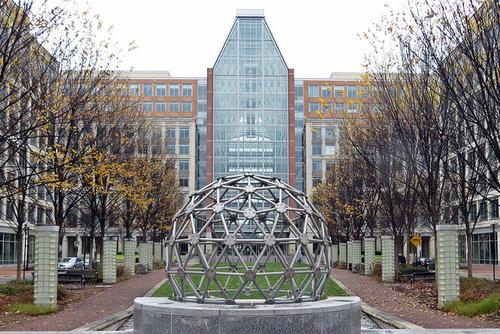Entrepreneurs and established companies alike depend on the U.S. Patent and Trademark Office to legally protect their inventions. But the Patent Office has been using a secret system to withhold the approval of some applications.
Newly released documents reveal that the office, tasked with evaluating and protecting the rights to intellectual property, has a covert system for delaying controversial or inconvenient patents.
It’s a system that attorneys say, if abused, could function as a way to limit or stomp out emerging companies.
Before today, the program — named the Sensitive Application Warning System (SAWS) — has been mentioned only anecdotally by examiners who work in or with the office, and in a government memo that was leaked in March 2006. However, a new 50-page document obtained by a law firm’s Freedom of Information Act request shows the sweeping scope and conflicting interests of this particular set of rules. The law firm behind the request, Kilpatrick Townsend & Stockton LLP, frequently represents major tech companies, including Apple, Google, Twitter, and Oracle.
Delays by design
When an application is submitted for a patent from a major law firm, it usually requires the approval of one or two examiners who work within the Patent Office. For Thomas Franklin, a partner at Kilpatrick Townsend, applications that he prosecutes typically issue as patents 22 months after filing. (Though the USPTO’s website estimates the average patent pendency time to be 29.1 months, that figure considers independent applicants who are not represented by powerhouse law firms.)
Any application that is categorized in SAWS, however, is placed in a special type of patent purgatory. SAWS-marked patents must be approved by anywhere from three to nine people and can be delayed for years. There is no official channel to notify an applicant once her patent is placed in the system, and the Patent Office has denied requests to divulge what applications are on the SAWS list.
For instance, three years ago, Franklin submitted an application for a startup that needed to secure crucial patents before it filed for public offering. It was being sued by a large company in the same space, and so it paid the Patent Office an extra fee to fast-track the application. Franklin and his client met with the examiner who was in charge of the case, and he seemed fairly confident that it would be approved in a timely manner.
But then, out of the blue, the examiner alluded to a special approvals process that would delay the project.
“He at first made me aware of that and said well, ‘That’s secret, I’m not supposed to say it,’ ” Franklin told Yahoo Tech. “That’s what piqued my interest as a constitutional issue. There’s a secret program that they’re not supposed to talk about.”
To this day, the patent — which Franklin says is for fairly mundane technology — remains in limbo, with little communication as to why or when it will be resolved from the USPTO. Franklin worries that the system could slow innovation in America.
“If it’s a startup trying to get traction against an established player, they may not get funding because they don’t get the patent in place,” he told Yahoo Tech. “It favors the entrenched incumbent in that space over the person with perhaps breakthrough technology.”
Patent applications can be placed in the SAWS program for an extensive number of reasons, which Franklin and his associates call “astonishingly vague.” This includes applications of “broad” or “pioneering scope,” “seemingly frivolous or silly subject matter,” or those “dealing with inventions, which, if issued, would potentially generate unwanted media coverage (i.e., news, blogs, forums).”
Whom does SAWS serve?The final item on this list could include literally any technology but may be particularly aimed at inventions from high-profile companies like Apple, whose patents are often picked apart by dedicated blogs like 9to5Mac or MacRumors.
The obtained documents also list areas of technology that might trigger a patent application to be placed in the SAWS program, including “smartphones,” “Internet-enabled systems,” and “processes and apparatuses involving Education.”
It’s these vast categories that Adam Charnes, a partner at the firm, says could raise constitutional issues.
“Presumably, not every smartphone patent application is sent into this program,” he told Yahoo Tech. “There’s no way they could be. There’s too many of them. If the criteria don’t give any guidance to the agency in deciding what’s in or what’s out, it leads to the very arbitrariness that we’re concerned about.”
Charnes and his colleague Kate Gaudry plan to publish an article for Law360, an online journal, in hopes of informing the public about this program, which they say most companies are wholly unaware of.
“The Patent Office is kind of a funny place,” Franklin said. “We have this manual of patenting examining procedure, and it’s 1,500 pages long. They tell us everything: all their criterion in excruciating detail. But there is no mention in this huge book of this SAWS program. It’s completely off the books.”
The USPTO’s communication desk did not offer a public comment by time of publication.
Below, the papers obtained from Kilpatrick Townsend & Stockton LLP’s Freedom of Information Act request.
Follow Alyssa Bereznak on Twitter or email her here.
